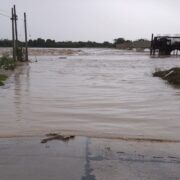Tino floods and the limitations of individual action

It’s the last two months of the year, a time when festive spirits would normally be at their highest. But it’s not Mariah Carey or Jose Mari Chan’s greatest classics occupying our minds. Instead, hanging over our heads is the looming threat of a natural disaster that’ll put an entire year’s worth of work to waste.
The way billions of pesos worth of flood control projects have gone to waste—in addition to incoming typhoons—many of our countrymen won’t likely be spending their holidays happily next to their families. If they’re not dead, instead, they’ll be picking up the pieces of a home wrecked equally by corruption as it was by a flood, and watching the year end, wondering what else they could’ve done.
Following the destruction left by Typhoon Tino and with the imminent arrival of even more disasters—we’re not simply talking about a likely scenario anymore, but a grim certainty we can only watch.
Typhoon Tino and its deadly trail
Typhoon Tino, internationally known as Kalmaegi, has caused hundreds of deaths over the past few days. According to the Office of Civil Defense, as of Friday, Nov. 7, the typhoon has left over 188 people dead and 135 missing in its wake.
Cebu, which was hit hardest, recorded 139 of these deaths, with 33 coming from the Negros region—not to mention, Cebu is also still currently recovering from the magnitude 6.9 earthquake that caused over 70 deaths just in October.
Before Tino hit, Cebu City Mayor Nestor Archival held a press conference outlining the city’s then-ongoing preparations. According to Archival, Cebu’s disaster response committee conducted coordination meetings as early as Nov. 1 in anticipation of the typhoon.
Their preparations included the pre-positioning of heavy equipment in mountainous areas in the event of landslides as well as ensuring a continued water supply. Archival also mentioned that radio communication in the area was to be powered by generators and solar units, should there be network outages, on top of prepared evacuation centers.
However, Archival has previously stated that Cebu is only 50 percent ready for large-scale natural disasters, citing a lack of medical professionals and technical experts.
But in light of ongoing flood control probes—not to mention, more than 100 days since the scandal was first unveiled—nothing else is at fault more than the hundreds of faulty flood control projects that should have worked in the first place.
A fool’s game
Following Typhoon Tino, Malacañang reaffirmed its intention to investigate all anomalous flood control projects in the region. According to Palace press officer Claire Castro, 343 flood control projects were completed from 2016 to 2022 in Cebu.
“If there were 343 flood control projects all along, they should have been working. So, let’s work together to find those who should be held accountable for these anomalous flood control projects,” Castro said during a press briefing on Wednesday, Nov. 5.
More than 100 days later, alongside billions of pesos of the people’s stolen money, and now hundreds of dead Filipinos, zero arrests have been made. What more evidence do they need when proof is everywhere?
It’s in all the unfinished (or missing) projects, it’s in the lavish lifestyles of contractors and politicians whose bank accounts belie their salaries—it’s in the ground, when you look at the corpses of Filipinos who should be looking forward to the holidays by now.
And with the arrival of yet another typhoon, how many more need to be dead before this blame game amounts to anything worthwhile?





















